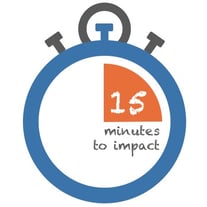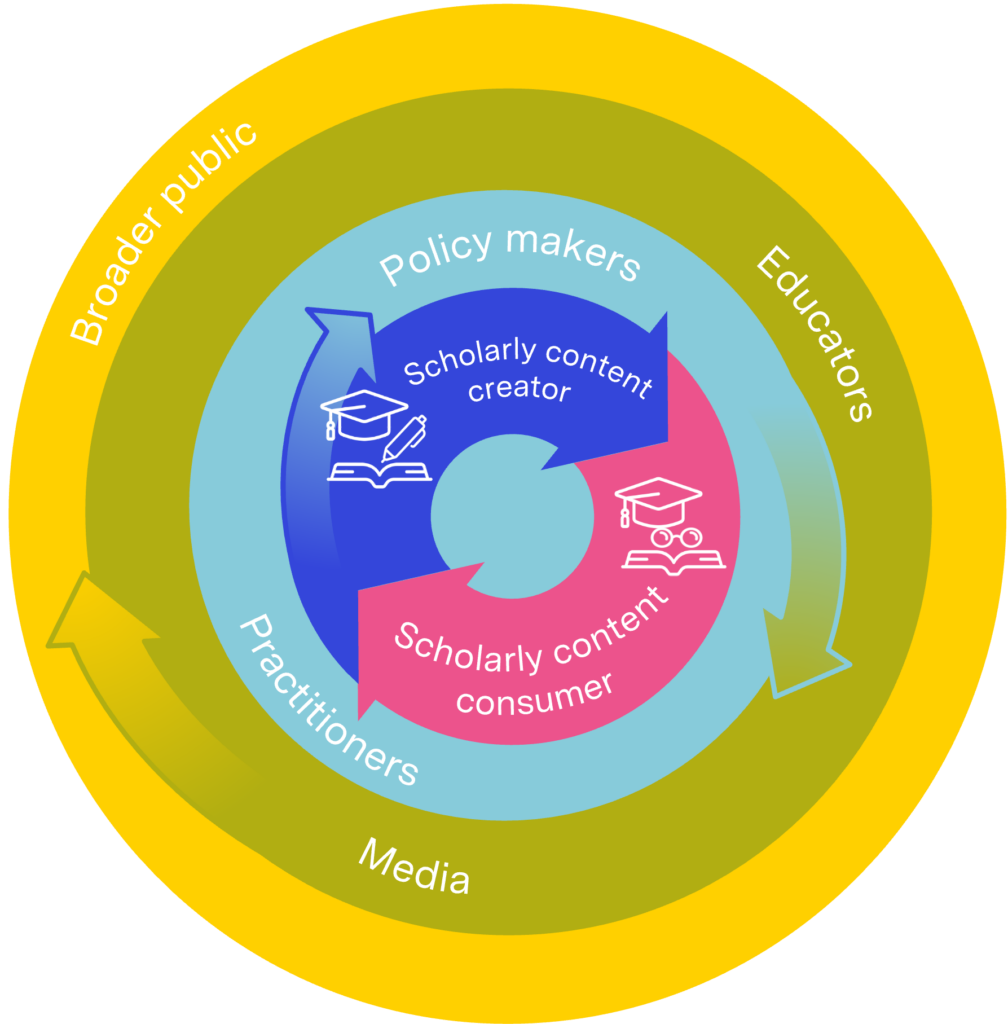 The pressure to create and demonstrate impact for your work means you have to work harder to ensure it is found, read, applied and cited. But you don’t have to be a communications expert, or to invest a lot of time. Kudos provides you with simple tools and guidance to help you maximize readership and citations for your work. It takes three simple steps:
The pressure to create and demonstrate impact for your work means you have to work harder to ensure it is found, read, applied and cited. But you don’t have to be a communications expert, or to invest a lot of time. Kudos provides you with simple tools and guidance to help you maximize readership and citations for your work. It takes three simple steps:
- Explain your work in plain language
- Share trackable links to your work
- Measure the effect on readership and citations
Below are hints and tips to help you with each step - researchers typically take just 15 minutes to explain and share via Kudos.
Ready to go? Register (if you're new to Kudos) or sign in (if you've already registered) to get started.
1. Explain your work and connect it to related materials |
|
 |
Why? Help more people find and understand your work - both within and beyond your field (your peers, and researchers in other disciplines; perhaps the media, policy makers, or the public). |
 |
How? Think about how you describe your work to family members or other non-specialists. Keep your language concise and simple. (This blog post and video have more tips for how to write in plain language). |
 |
Get started: Write 4-5 sentences that explain what your work is about and why it is important. |
 |
Supercharge: Add a short title (correlated with higher citations); add a personal “perspective" and encourage your co-authors to add their views; use the “resources” area to add links to other materials that help to explain the work or set it in context (e.g. data, videos, images, press releases). |
 |
Bonus: You can edit your explanations or add new links over time, to update your research story and generate ongoing interest in your work. |
2. Share this summary of your work |
|
 |
Why? You probably already communicate about your work to people who might be interested – whether that is via email, social media, academic networks, or via conferences and presentations. A quick update to let people know that your paper has now completed the publication process (or a quick reminder about an old work that is newly topical) can be welcome. |
 |
How? The “Share” tab of your publication page on Kudos generates a trackable link for you to use when sharing. This means that, however you prefer to share, you can map the results to publication metrics, and learn which types of communication are proving most useful in helping people find and read your work - helping you save time in future by focusing on the approach that is most effective. |
 |
Get started: Copy your Kudos trackable link and send it in an email. |
 |
Supercharge: Connect your social media accounts with your Kudos account to post your trackable link and comment directly from Kudos into Twitter, LinkedIn or Facebook (these blogs posts and videos provide guidance for how to get started with social media and build your social media following); use Kudos trackable links in blogs, presentations or reading lists and you’ll be able to track and measure everything you do to raise awareness of your work. |
 |
Bonus: Your publication page on Kudos automatically links to the authoritative version of your article on the publisher’s site, so you can share this page freely without the need to check publisher copyright. |
3. Measure your impact |
|
 |
Why? With a wider range of metrics now being used to evaluate research and researchers, it’s important to be aware of the different metrics, to know how your work currently performs against them, and to understand which of your communications efforts is likely to improve your performance. |
 |
How? Kudos uniquely brings together a “basket of metrics” including citations, downloads and Altmetrics (tracking discussion of your work in the media, social media, policy documents, etc.) - this means you can look at a range of different types of metrics about your work, in one place, regardless of where you have published or communicated. |
 |
Get started: Look at the “Metrics” tab for any of your publications for a summary of how many times you shared it, how many times the links you shared were clicked, how many views there have been of your publication page on Kudos, how many times people have clicked through from Kudos to the full text on the publisher website, what the current “Altmetric score” is for your work, and how many times the work has been cited (according to Web of Science). |
 |
Supercharge: Tap the “Detailed metrics” button for any of your publications to see your actions mapped against your metrics in realtime graphs that show clearly which actions seem most correlated with improvements in your views, downloads and Altmetric score; look at your private “Author dashboard” to see a summary of actions and metrics for all your publications. |
 |
Bonus: Watch our webinar to learn more about each of the metrics included in Kudos, and understand how you can use the Kudos toolkit not only to measure impact but to create it. |
Ready to go?
- Register (if you're new to Kudos) or sign in (if you've already registered) to get started!
- Start by finding, explaining and sharing just one publication - once you have improved performance for one work, it's easier to make time to spend explaining and sharing your other publications.
- Read more top tips here
- Read about other researchers' experiences with Kudos



